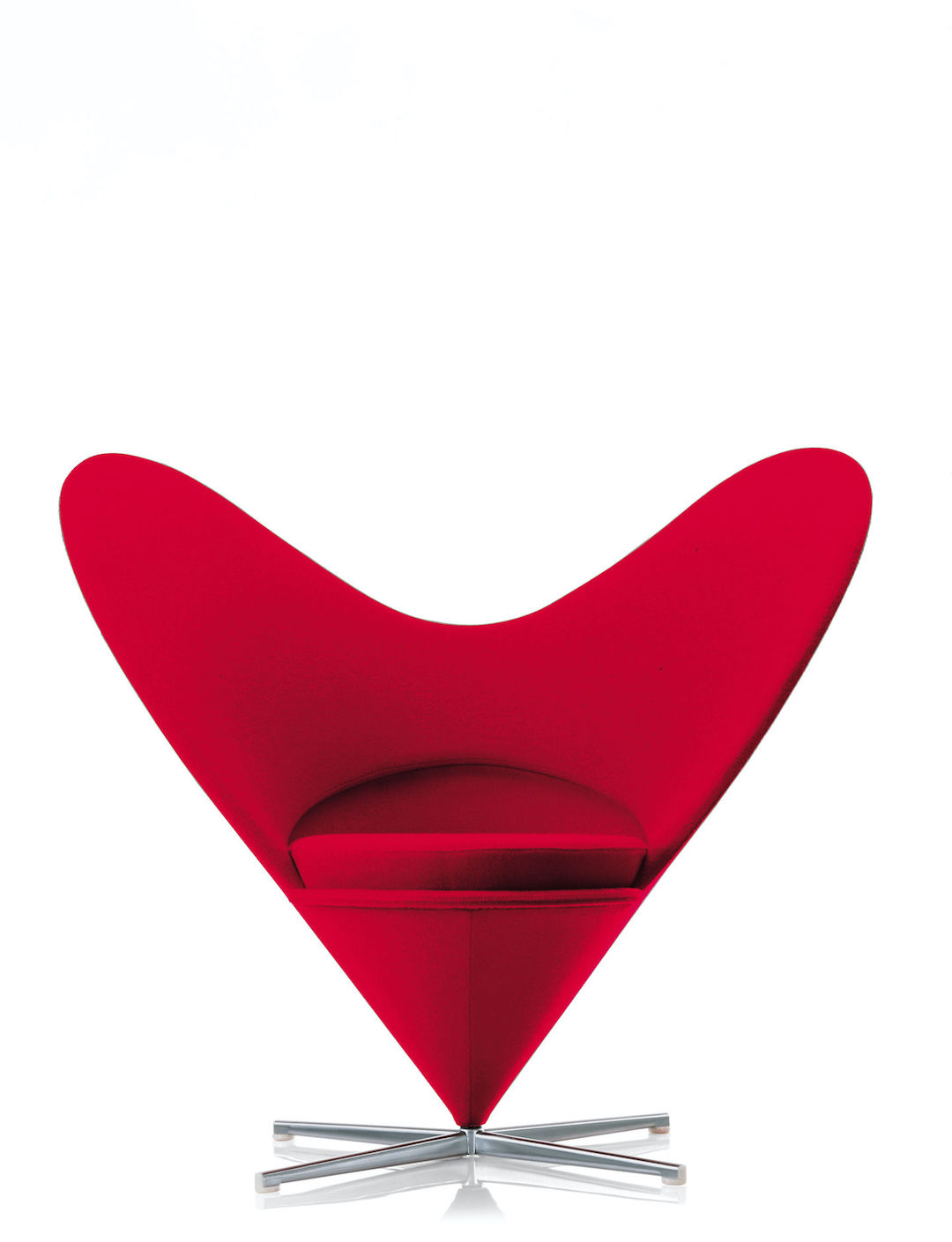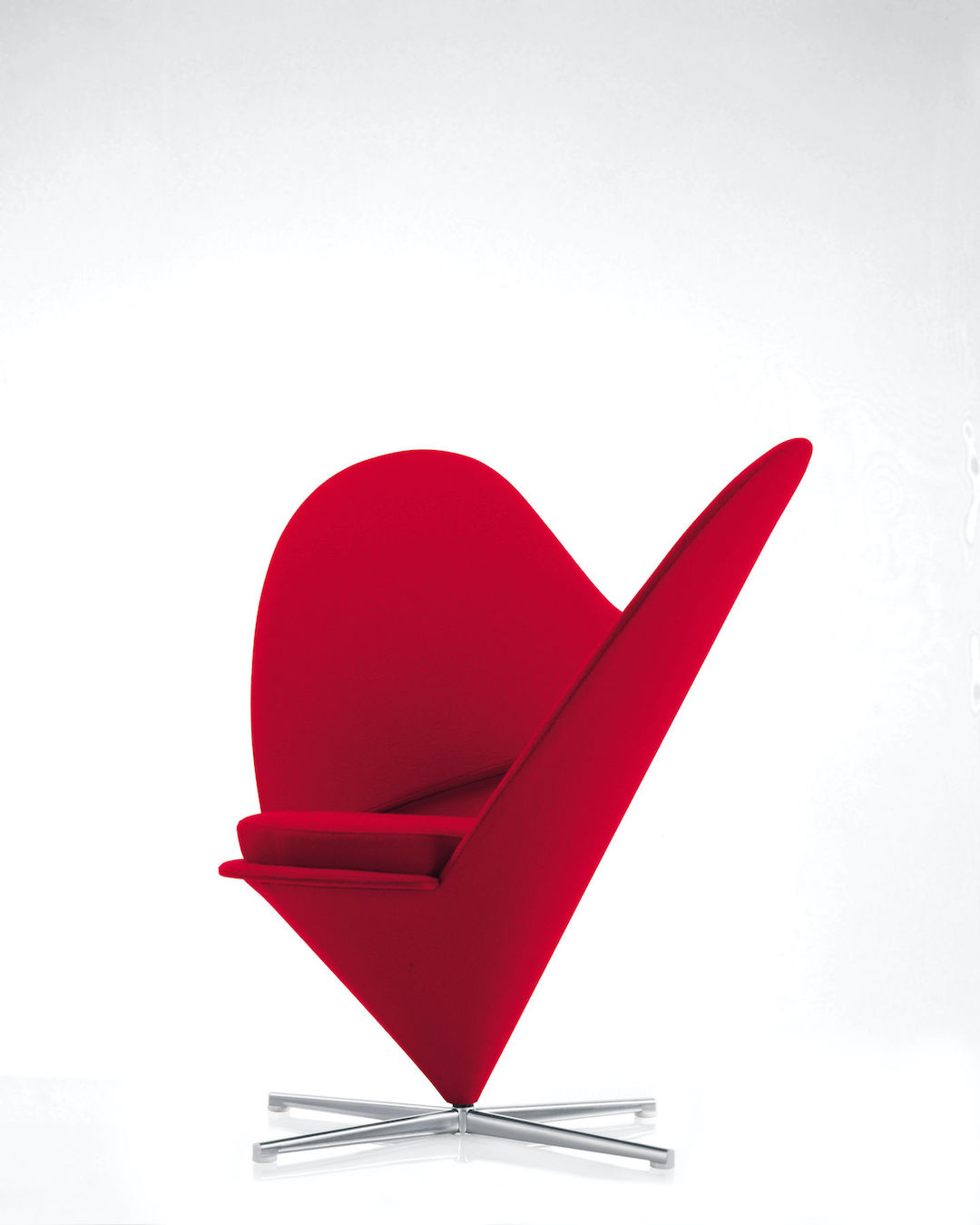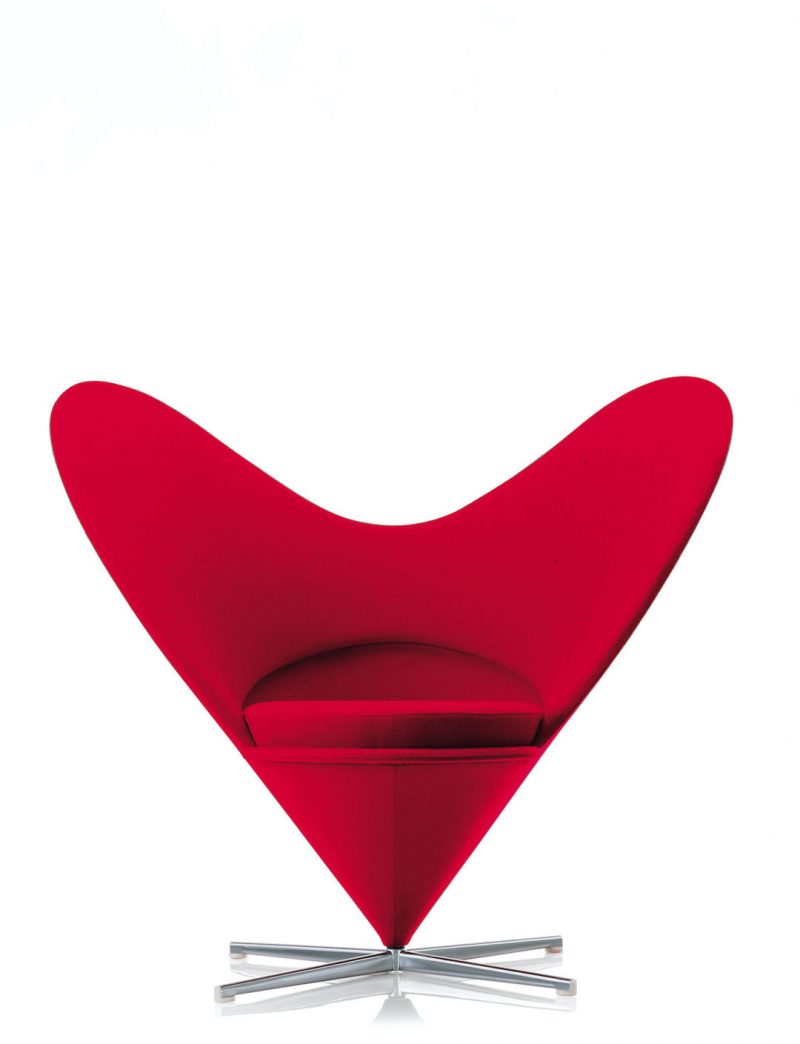
It’s Valentine’s Day again, but we know the predictable roses and chocolates might leave MCM fans feeling blasé. So as our Valentine’s Day treat, we thought we’d turn your attention to—what else?—great design. Verner Panton’s Heart Cone Chair is as memorable and enduring as it is innovative.
Breaking the Danish Design Mold
Verner Panton was part of the height of Danish Modernism. He studied at the Royal Danish Academy of Fine Arts in Copenhagen, worked with Arne Jacobsen, and was a good friend of Hans Wegner. Panton’s vision differed from his colleagues, however, pushed for bold, colorful designs. As 1stdibs.com notes, Panton’s designs serve as “eye-catching exclamation point[s].”
His designs certainly command attention, whether it’s the single molded piece of plastic that forms the legless Panton chair or the futuristic contour of his Cone chair. According to The Financial Times, when the Cone chair was first brought to New York for display in a Fifth Avenue shop, it drew such a crowd that police ordered the chair be taken away.

The Heart Cone Chair: Then & Now
That crowd-gathering Cone chair design was a precursor to the Heart Cone chair. The conical base is the same, but the heart-shaped back made of upholstered sheet metal serves as the inspiration for the chair’s name. Upon its debut, the design was touted as the contemporary interpretation of the wingback chair.
In the 90s, Panton modified the Heart Cone Chair design for Vitra. The modified design is still available today at vitra.com. If you’re looking for a vintage model, sites such as 1stdibs.com are a great starting point.
Want to get a better sense of the Heart Cone Chair as conversant with but departing from Danish Modernism? Read Danish Modern Style.
And of course, don’t forget to follow us on Instagram, Facebook and Pinterest for more Mid Century Modern inspiration!












